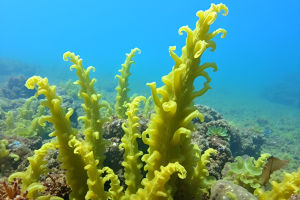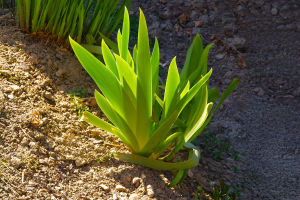When we think of communication, we typically imagine humans talking to each other, or perhaps animals signaling one another with sounds or gestures. But what if we told you that plants also communicate?
You might find it hard to believe, considering plants don't have mouths, ears, or eyes. However, the world of plant communication is far more complex than we once imagined.
In this article, we will explore how plants use chemical signals and electrical currents to communicate with each other and their environment.
The Science Behind Plant Communication
Plants don't talk to each other like humans do, but they do exchange information in ways that allow them to survive and thrive. The communication process involves two main mechanisms: chemical signaling and electrical signals.
Through these methods, plants can alert each other about potential threats, share resources, and coordinate growth in response to environmental changes. Let's dive into how these systems work.
Chemical Signaling: A Plant's "Language"
Plants release a variety of chemicals into the air or soil as a form of communication. This chemical signaling is similar to how we might use a phone call or text message to alert someone to danger or to share information. When a plant is attacked by herbivores, such as insects, it may release volatile organic compounds (VOCs) into the air.
These VOCs can travel through the air and warn neighboring plants of the potential threat. In response, the neighboring plants may activate their own defense mechanisms, such as producing toxic chemicals to deter the herbivores.
Interestingly, plants can also communicate with each other through the soil.
Mycorrhizal fungi, which form symbiotic relationships with plant roots, play an important role in this underground communication network. Through this network, plants can exchange nutrients and chemical signals that help them coordinate responses to environmental stress.
For example, if one plant is underwater stress, it can signal others to adjust their water usage or prepare for a similar situation.
Electrical Signaling: The Nervous System of Plants
While chemical signals are important, plants also use electrical currents to communicate. This may sound strange because plants don't have nerves, but they do have systems that function somewhat like a nervous system. When a plant experiences a stressor, such as physical damage or drought, it can send electrical signals through its tissues.
These electrical signals are transmitted in the form of action potentials, which are similar to the electrical impulses that travel along our nerves. When a plant experiences injury, for instance, the damaged tissue will release an electrical signal that travels to other parts of the plant. This signal can trigger a response, such as the closing of stomata (tiny pores on leaves), to prevent further water loss.
Moreover, plants can use electrical signaling to synchronize their growth. If one part of a plant is exposed to sunlight, it might send an electrical signal to other parts of the plant to adjust its growth patterns, ensuring that the plant receives maximum exposure to light for photosynthesis.
Plant "Memory" and Learning
One of the most fascinating aspects of plant communication is the concept of plant memory. Research has shown that plants have the ability to "learn" from previous experiences and adapt their behavior accordingly. This goes against the traditional idea that plants are passive organisms that simply react to their surroundings.
In one study, plants were exposed to a mild stressor, such as being touched lightly or subjected to a non-lethal herbivore attack. The plants' response was minimal at first. However, when the same stressor was applied again, the plants showed a stronger defensive reaction. This suggests that plants are capable of "remembering" the threat and adjusting their responses to future encounters.
This phenomenon is similar to how animals learn from experience. Though the mechanism behind plant memory is still not fully understood, it highlights the impressive ways in which plants can interact with their environment and adjust their behavior to ensure survival.
How Do Plants Use Communication to Benefit the Ecosystem?
While plant communication might seem like a quiet and hidden process, it plays an essential role in maintaining the health of entire ecosystems. Through their chemical and electrical signaling, plants can warn each other of predators, share resources, and even cooperate to enhance their survival chances.
For example, when a plant releases VOCs in response to an insect attack, it's not only protecting itself but also helping its neighbors. This collective defense mechanism increases the chances of survival for the whole plant community.
Additionally, plants often cooperate with each other through the mycorrhizal network in the soil, which facilitates nutrient sharing and strengthens the ecosystem as a whole.
The Future of Plant Communication Research
As science continues to unravel the complexities of plant communication, researchers are beginning to explore how these processes could be applied in agriculture and environmental management. Understanding how plants communicate could lead to innovations in crop protection, sustainable farming practices, and even ecological conservation efforts.
For instance, if we can better understand how plants communicate stress signals, we may be able to design more efficient irrigation systems or develop plants that are more resistant to pests and diseases.
Similarly, the ability to harness plant communication could lead to the creation of "smart" gardens or farms that can respond to changing environmental conditions in real-time.
Conclusion: Plants Are More Intelligent Than We Think
We've only scratched the surface of how plants communicate, but what's clear is that they are far more intelligent and dynamic than we ever thought. They may not have brains or consciousness in the way we do, but plants are constantly processing information, reacting to their environment, and even learning from their experiences.
This incredible communication network ensures their survival and allows them to adapt to challenges in ways that we are just beginning to understand. So, the next time you walk through a forest or garden, remember that the plants around you are constantly talking to one another, working together to survive, and using complex systems that we are still trying to fully comprehend.


